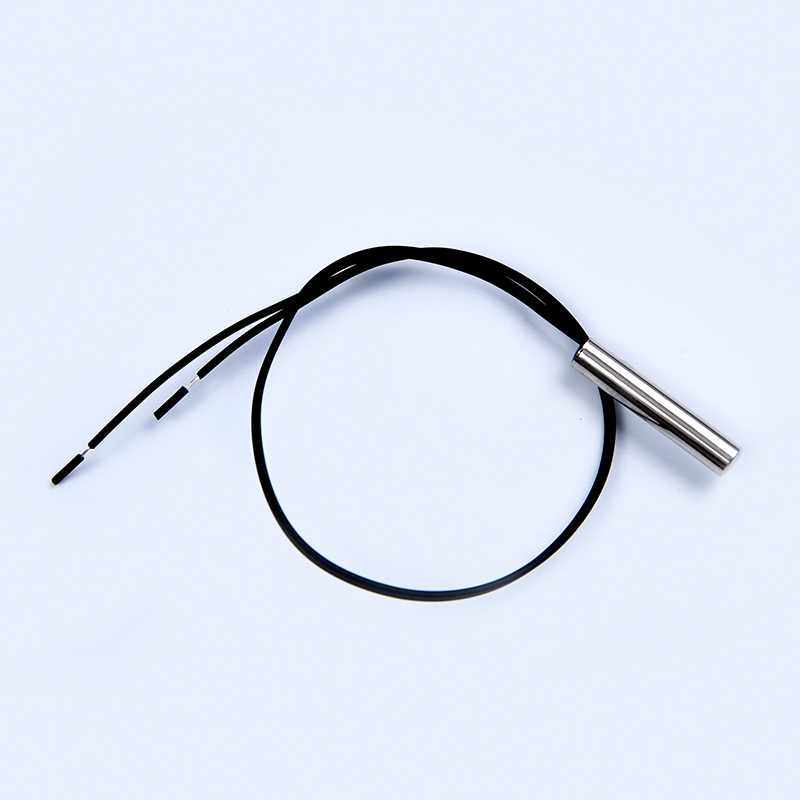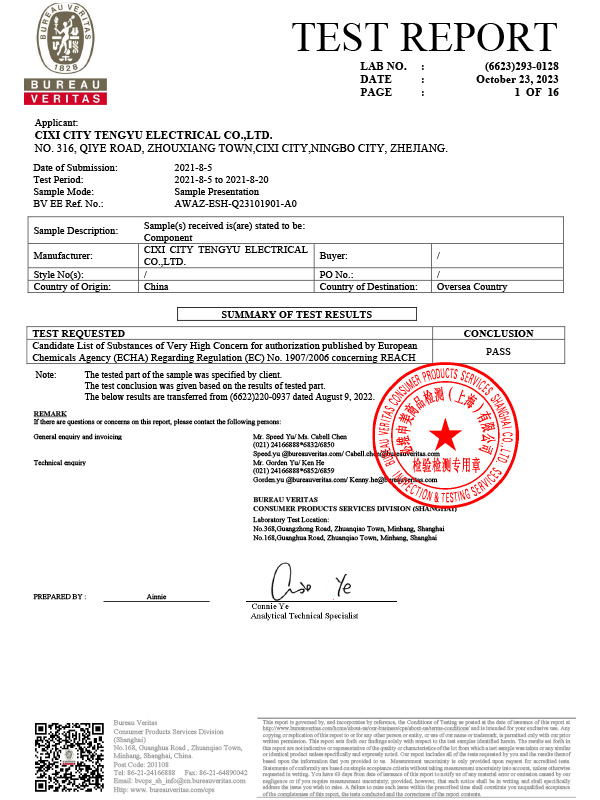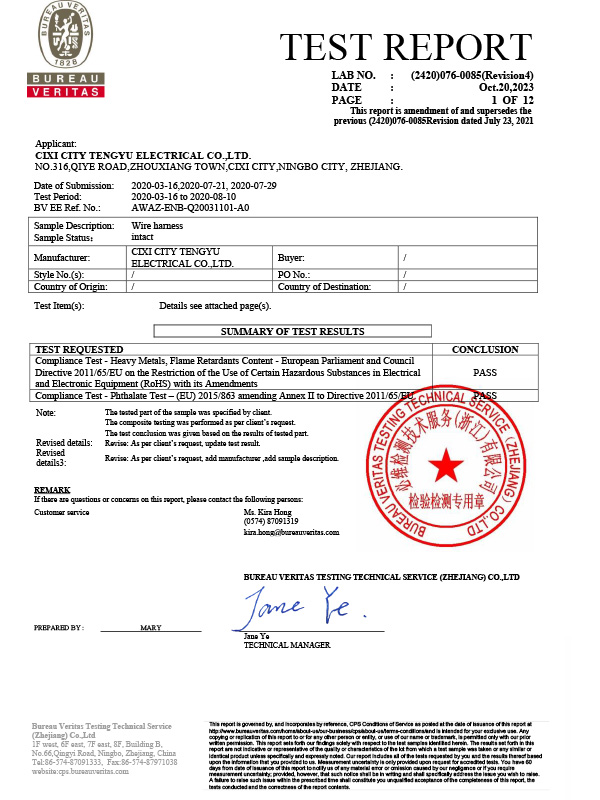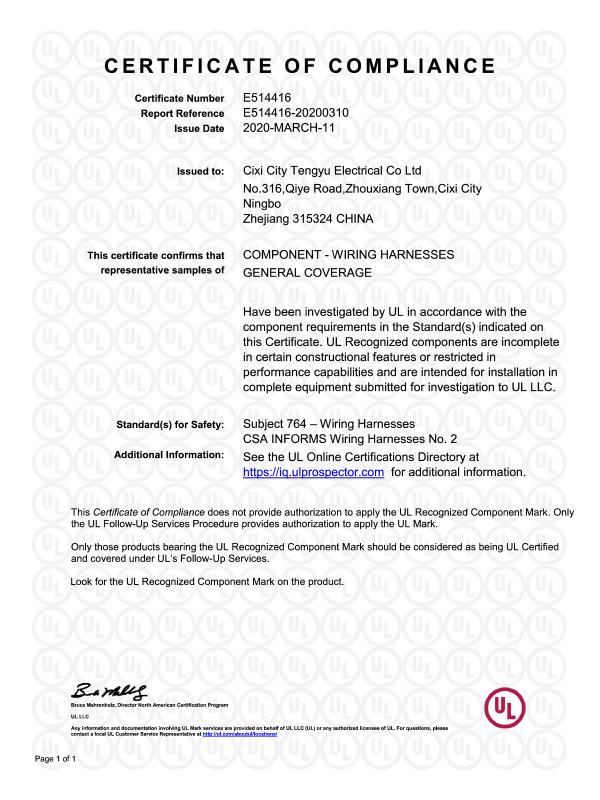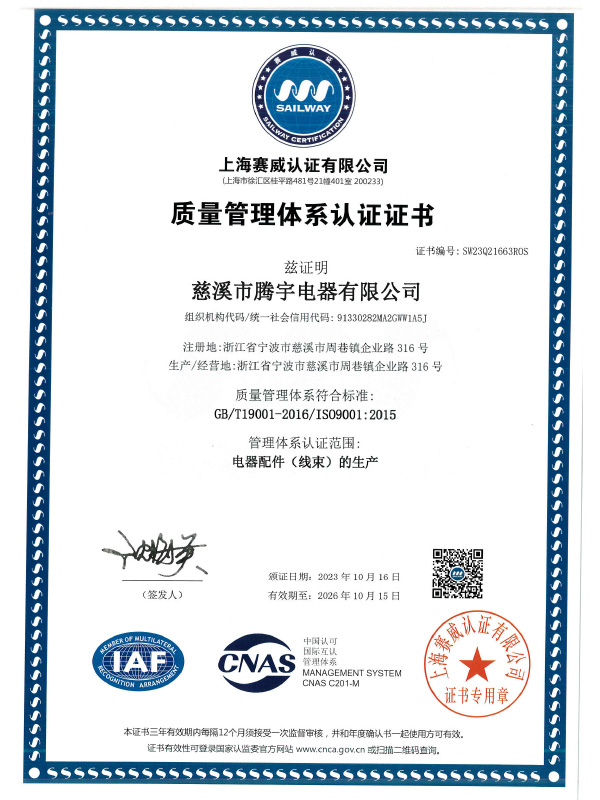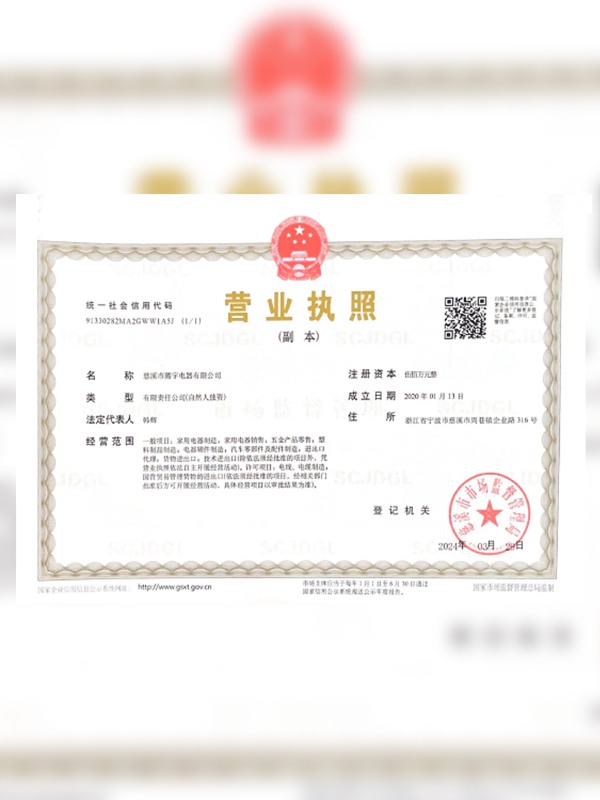The most fundamental part of the
Induction Cooker NTC Temperature Sensor is the thermistor, a semiconductor device whose resistance decreases with increasing temperature. This property is achieved through careful selection of metal oxide compositions, commonly including nickel, cobalt, manganese, and copper oxides, which are sintered into a ceramic body. The structural integrity of this ceramic body must remain stable under high thermal stress, ensuring that resistance values remain accurate across thousands of cooking cycles. In terms of electrical behavior, the thermistor is designed to provide a predictable resistance-temperature curve, often defined by the Beta constant. This constant must be tightly controlled during manufacturing, since even minor deviations would cause the induction cooker’s microcontroller to misinterpret temperature readings. Achieving this level of control requires advanced production technology and precise quality management, such as the systems implemented by Cixi Tengyu Electric Appliance Co., Ltd. The company ensures that our sensors are not only responsive but also maintain their calibration over extended use. The ceramic element is usually coated with protective glass to reduce susceptibility to humidity and chemical attack, making it more durable in kitchen environments where moisture and oil vapors are always present. By investing in research, development, and production refinement, Cixi Tengyu guarantees that the thermistor cores in our sensors provide stable, reliable performance that forms the foundation for accurate induction cooker temperature management.
The thermistor itself is highly sensitive and cannot operate effectively without proper protection. Therefore, encapsulation is a central design element of the Induction Cooker NTC Temperature Sensor. This process involves embedding the thermistor within a protective layer such as epoxy resin, glass, or ceramic coatings. Epoxy encapsulation provides excellent adhesion and resistance against oil and grease penetration, while glass encapsulation is chosen when higher precision and long-term stability are required. Surrounding this encapsulation, the sensor is housed in robust materials like stainless steel or copper, which provide mechanical strength while allowing efficient thermal transfer. Stainless steel housings are favored for their corrosion resistance, especially in humid cooking environments, while copper housings are often used when higher sensitivity and faster heat conduction are desired. The structural design of the housing also includes aspects such as probe length, diameter, and sealing methods, which determine how effectively the sensor can transfer real thermal conditions to the thermistor core. The choice between different housings depends on the target application, whether it is for a high-performance commercial induction cooker or a compact household model. Cixi Tengyu Electric Appliance Co., Ltd. applies a scientific management system to guarantee that housing designs meet international standards, performing strict control over materials and manufacturing processes so that our sensors are not only sensitive but also durable enough to withstand the physical challenges of long-term use.
For the Induction Cooker NTC Temperature Sensor to transmit accurate signals, its electrical connections must be both stable and durable. The lead wires that connect the thermistor to the induction cooker’s control circuit must be chosen carefully for their conductivity, flexibility, and resistance to heat. Commonly, copper wires are used due to their excellent conductivity, but these wires must be insulated with high-performance materials such as PTFE (Teflon), silicone rubber, or fiberglass sleeving to withstand the elevated temperatures around the cooking surface. Insulation materials must also resist oil and chemical exposure, since kitchen environments often present conditions that degrade weaker polymers. The junction between the lead wires and the thermistor is a particularly vulnerable point. To ensure long-term stability, this junction is sealed with heat-resistant adhesives or encapsulants that prevent oxidation and mechanical loosening. Poorly executed connections could result in fluctuating signals, leading to unsafe cooking conditions. At Cixi Tengyu Electric Appliance Co., Ltd., every production batch undergoes strict inspection of wire connections to eliminate risks of weak bonds or electrical failures. The company’s integration of research, production, and quality assurance ensures that our sensors maintain stable connectivity, transmitting precise resistance values without degradation even after thousands of thermal cycles. This reliability is what allows induction cookers to deliver consistent cooking results day after day.
The placement of the Induction Cooker NTC Temperature Sensor within the appliance is a critical factor in its functional success. If the sensor is mounted too far from the heating surface, it may not accurately reflect the temperature of the cookware, leading to delayed adjustments in power. If it is too close to the induction coil, electromagnetic fields could interfere with sensor performance. To avoid these problems, engineers design precise mounting solutions such as spring-loaded clips, threaded inserts, or custom brackets that hold the sensor in the correct location. These structures allow the sensor to maintain direct thermal contact with the metal plate beneath the cookware while minimizing interference from other components. The mounting design must also allow for easy assembly and replacement, since serviceability is an important factor for appliance manufacturers. Cixi Tengyu Electric Appliance Co., Ltd. produces sensors that integrate seamlessly with the mechanical design of induction cookers, offering consistent accuracy in temperature detection. The company’s ability to customize mounting solutions for different cooker models ensures that our sensors can meet the varied requirements of global customers. Through innovative engineering and strict production management, the company guarantees that positioning accuracy translates into reliable thermal monitoring in every cooking scenario.
An effective Induction Cooker NTC Temperature Sensor must combine fast thermal response with stability under continuous operation. The speed of response is determined by factors such as the thermal mass of the housing, the thickness of encapsulation, and the surface area exposed to heat. A sensor with a thinner housing and minimal encapsulation may respond faster but risks being less durable, while a thicker housing offers greater mechanical protection but could slow down responsiveness. Engineers must balance these factors to design a sensor that reacts quickly to sudden changes in cooking temperature while still surviving repeated heating and cooling cycles. Sensitivity is another critical aspect. The resistance change per degree Celsius must be large enough for the induction cooker’s microcontroller to interpret small variations accurately. High sensitivity allows the system to implement fine control over heating power, improving both safety and cooking performance. Cixi Tengyu Electric Appliance Co., Ltd. uses advanced material selection and process optimization to ensure that our sensors offer both rapid response times and stable sensitivity. Through continuous testing and refinement, the company produces sensors that satisfy the demanding needs of modern kitchens, where precision control is not only desired but expected.
The reliability of the Induction Cooker NTC Temperature Sensor depends heavily on calibration. Each thermistor follows a resistance-temperature curve that must be matched to the induction cooker’s control algorithms. Even small errors in this curve could lead to inaccurate temperature readings, causing undercooking, overcooking, or safety hazards. Calibration begins at the material selection stage, where the composition of metal oxides is adjusted to achieve the desired Beta constant. During production, sensors are tested at multiple reference temperatures, and resistance values are compared against established standards. Only sensors that fall within tight tolerance ranges are approved for use. In some cases, additional electronic compensation circuits are designed to further refine the sensor’s accuracy across wide temperature ranges. At Cixi Tengyu Electric Appliance Co., Ltd., accuracy control is a fundamental part of the production process. The company applies internationally advanced calibration methods to guarantee that our sensors deliver consistent results. Senior personnel in R&D and quality management oversee these processes, ensuring that every sensor aligns perfectly with induction cooker requirements. This precise calibration is what allows the cookers we use to regulate temperature in real time, making everyday cooking both efficient and reliable.
Because induction cookers operate in challenging environments, the Induction Cooker NTC Temperature Sensor must be mechanically reinforced and environmentally protected. Moisture, oil, steam, and constant thermal cycling can degrade poorly protected sensors. To address this, manufacturers design strain relief mechanisms at wire exits, which prevent wire breakage caused by bending or vibration. Protective coatings such as silicone gels or epoxy potting compounds are applied to seal gaps, keeping moisture and grease away from sensitive components. Housings are designed with corrosion resistance in mind, ensuring that prolonged exposure to humidity or cleaning agents does not compromise structural integrity. Environmental testing, including salt spray and humidity chamber trials, is used to confirm that sensors will withstand long-term kitchen conditions. At Cixi Tengyu Electric Appliance Co., Ltd., these protective measures are not optional but mandatory. The company applies strict production control to ensure that our sensors achieve long service lives, making them reliable components in both household and commercial induction cookers. By combining mechanical reinforcement with comprehensive environmental protection, the company delivers products that consistently earn the trust of customers worldwide.




 中文简体
中文简体